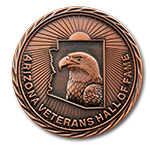By Lea Seago
Class of 2013
Egypt to Constantinople and the vast Arabian Desert held a turbulent place in World War I, the British + Arabs against the Germans + Turks.
The most famous wanderer, during WWI, was T. E. Lawrence or as we know him Lawrence of Arabia. An Oxford graduate, in his early twenties knew that the normal life in Britain was not enticing, so he looked to archeology and the study of architecture and Middle East civilizations. Most of all he studied desert people, land formations and maps. He could blend into foreign environments and needed no special provisions. Lawrence had visions of excavations in Arabia. The British saw this as an advantage.
Lawrence was commissioned as a Lieutenant into the British Army, and immediately sent to Egypt. He was noticed as exceptional with land and war tactics; therefore they shipped him to Arabia. He was to plot, spy and inform, as well as develop desert tribes to band with Britain against the Turks. Britain was lining up their battle plan to save the Suez Canal and to rid essential areas in Arabia of Turks, Germans and what remained of the Ottoman Army. Saving the oil for Britain was also a driving factor.
During the same time period, Gertrude Bell was wandering in Arabia. She was an Oxford graduate also. She found life in Britain to be ordinary and decided to further explore Arabia, at the behest of the British government. Bell was twenty years senior to Lawrence and was also traveling under the guise of an Archeologist. Gertrude made friends with many of the Arab Sheiks. The British government recognized the importance to the mission of holding onto and mapping the Middle East. With the knowledge and expertise in languages, Lawrence and Gertrude had the ability to provide accurate information regarding complex tribal alliances.
Lawrence imbedded himself into the Arabian culture and worked with and trained Arabs in the techniques of demolition. The goal was the destruction of the German Heiaz railroad which supplied war efforts. He was known to have as his personal weapon, a Hotchkiss, which he had used in order to kill; Lawrence never forgave himself for that experience in the war.
Gertrude moved about the desert marking sparse water sources and strategic areas for her maps. At the time maps were very primitive and not good for the development of a battle plan. She dressed as an English Lady, always in fashions sent regularly by her family in Britain. It was said of her that “she is a remarkably clever woman with the brains of a man.”
Enter William Yale, an American contemporary of Lawrence. He was also a wanderer. His family is known for founding Yale University. William was the third son so he was on his own. In the beginning, his direction was not Arabia. He worked on construction of the Panama Canal and in the oil fields of Oklahoma. OIL— Standard Oil Company had its sights on the vast Arabian Oil fields, however, there were neither roads nor equipment positioned in the Middle East during the early 1900s to process and export drilled oil. So William was hired to spy on activities in Arabia, as a member of the Company’s Foreign Service, to obtain information to use in later oil exploration. He also dressed in robes as an Arab, a likeness to Lawrence, while spying.
During the rise of the war, Lawrence, Gertrude and William crossed paths as they were making huge contributions to their respective countries. The exotic always mesmerizes us, especially those with a wandering spirit. In all of the tragedies of war, carnage and the unspeakable give one a new out of war perspective. The triad gives us a glimpse of three people focused on a mission. They each received their much needed sense of adventure. Lawrence in his flowing robes, Gertrude dressed to the nines sitting in a desert tent, with William slinking around spying and setting the stage for further oil drilling. All removed from the throes of a World War raging around them.
We have come a long way – – – however? Facts to Ponder:
Thomas Edward Lawrence/Colonel Lawrence/T.E. Lawrence/Ned/Lawrence of Arabia was unable to live with his fame, so he became John Hume Ross when he joined the RAF as an enlisted man. He later became T.E.Shaw when his ploy was discovered. He helped construct what became the RAF’s Air Sea Rescue Service. He also pioneered aerial photography for map making and as an intelligence source.
Gertrude Bell was awarded the CBE, Commander of the British Empire. She was credited for much of the success of the Arab Revolt. Lawrence relied on her reports and made use of the information. Gertrude created the National Museum of Iraq in Bagdad. The museum was funded by much of her personal money; many of the artifacts found in the museum were from her collection. The museum today is recovering from damage and pillage as a result of the recent war in Iraq.
William Yale, wanting to be of service to the United States, joined the US Department of State during the war. When he returned to the US he became a college professor and lecturer regarding the Middle East. Lawrence, Gertrude and Yale, were taken with the Arabian Desert and its people.
Lawrence said “The war showed me that a combination of armored cars and aircraft could rule the desert” (he was known for his use of armored Rolls Royce’s).

